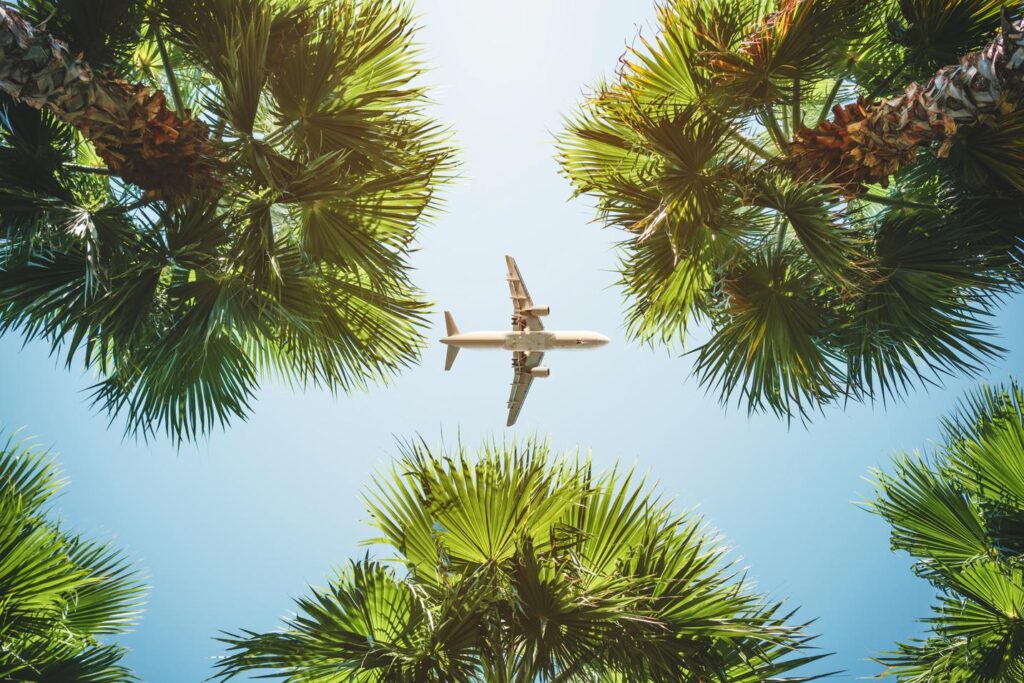Healthcare Is It Safe To Fly? The National Academy Of Sciences, Engineering, And Medicine Weighs In William A. Haseltine Contributor Opinions expressed by Forbes Contributors are their own. Jun 14, 2022, 10:27am EDT | Share to Facebook Share to Twitter Share to Linkedin airplane flight.
tropical vacations. getty For many years, many of us have flown for business, pleasure, or to see relatives and friends. For the past two and half years, Covid-19 introduced a significant risk to travel.
Many wonder how to mitigate this risk. This is the first in a series discussing the airline industry in the Covid era, the risks involved, and how to mitigate them. To inform this discussion, we will use two recent reports from the National Academy of Sciences, Engineering, and Medicine that detail aviation in the Covid era .
Over 4. 5 billion passengers flew on commercial airlines in 2019. The Covid-19 pandemic grounded thousands of planes and delayed travel plans for all nonessential travelers.
Only 1. 8 billion flew in 2020 and 2. 2 billion in 2021.
Halfway through 2022, current estimates anticipate 3. 4 billion by the end of the year, which is more than 2015 and all preceding years. In short, the airline industry is back, but that does not mean that Covid-19 is no longer a threat on airplanes and in airports.
During the height of the Omicron variant wave, Dr. Dave Powell , physician and medical adviser to the International Air Transport Association, stated that “aircraft passengers were two or even three times more likely to catch Covid-19 during a flight. ” Close contact with dozens or even hundreds of people for several hours in a closed metal vessel is ideal for transmitting a respiratory virus.
More recently, a swath of airline policy relaxations put those flying in even more danger of Covid-19. In April, US District Judge Kathryn Kimball Mielle of Florida ruled against the federal mask mandate on public transportation. Within hours, all major US airlines, including United, American, Delta, Southwest, and others, stated masks were now optional on their aircraft.
Commercial aircraft heavily ventilate the air in the cabin. One Covid-19 patient on a plane does not guarantee that all on board will be infected. However, those within a few rows of the infected person are at much greater risk.
Removing mask mandates will steepen those odds further. MORE FOR YOU CDC: Salmonella Outbreak Has Left 279 Ill, 26 Hospitalized In 29 States Canadians End Up In ICU After Attending ‘Covid Party’ White House Mandates Pfizer Vaccines for Millions of Citizens . .
. Before the FDA Clinical or Safety Reviews Have Been Made Public A policy failure that has gone from bad to worse recently is negative Covid test requirements. At no point in the Covid-19 pandemic did the federal government require a negative test for domestic travel.
A passenger could be at peak infectivity and board a plan without restriction. For international travel, the United States did require a negative antigen or PCR test to enter the country to prevent the spread of international variants. This mandate has now come to an end.
As of June 12th, “international travelers will no longer need to show proof of a negative Covid test before boarding flights to the United States, ending one f the nation’s last pandemic-related travel requirements. ” The decision will be reassessed in 90 days, according to the CDC. All non-citizens, nationals, or permanent residents must still show proof of vaccination to enter the country.
These policy retractions coincide with the busy summer season of air travel. The US Travel Association expects the most significant travel season since 2019, as 6 in 10 Americans will take at least one summer trip, and roughly $100 billion will be spent on travel nationwide. While infection counts may be down compared to the Omicron wave due to vast reductions in national testing, rest assured, Covid-19 will thrive in the coming months.
Descendants of the Omicron strain of viruses, namely BA. 4 and BA. 5, are more infectious than their parental strains and may reinfect those infected with earlier versions of Omicron.
Hundreds of millions traveling to highly packed travel destinations on board aircraft with no Covid restrictions will yield millions of infections. Not to mention, other viruses and diseases will circulate efficiently in crowded social settings as well, such as influenza or even the evermore concerning monkeypox. There are some precautions to take if traveling.
Of course, the greatest protection from Covid is to avoid traveling altogether. However, this is becoming more difficult in what many claim is a post-pandemic world. First, be fully vaccinated, meaning two initial doses, plus one or even two booster doses, if available.
Second, keep your mask (preferably an N95 mask) on as much as possible in the airport and aboard an aircraft. While masks primarily protect those around you from your respiration, they also protect the wearer to a lesser extent. Third, if seat selection is available, try to have an empty seat between you and another passenger.
Also, forego the views of the outside world for an aisle seat as those receive ventilated air first. Fourth and finally, be thoughtful about social interactions. Avoid sharing drinks with strangers, large gatherings in enclosed spaces, etc.
Covid-19 remains prevalent, but the airline industry is pushing the narrative that this is a post-pandemic world. It is up to those that do not want this disease to take the measures they can to avoid infection. Follow me on Twitter or LinkedIn .
William A. Haseltine Editorial Standards Print Reprints & Permissions.
From: forbes
URL: https://www.forbes.com/sites/williamhaseltine/2022/06/14/is-it-safe-to-fly-the-national-academy-of-sciences-engineering-and-medicine-weighs-in/
